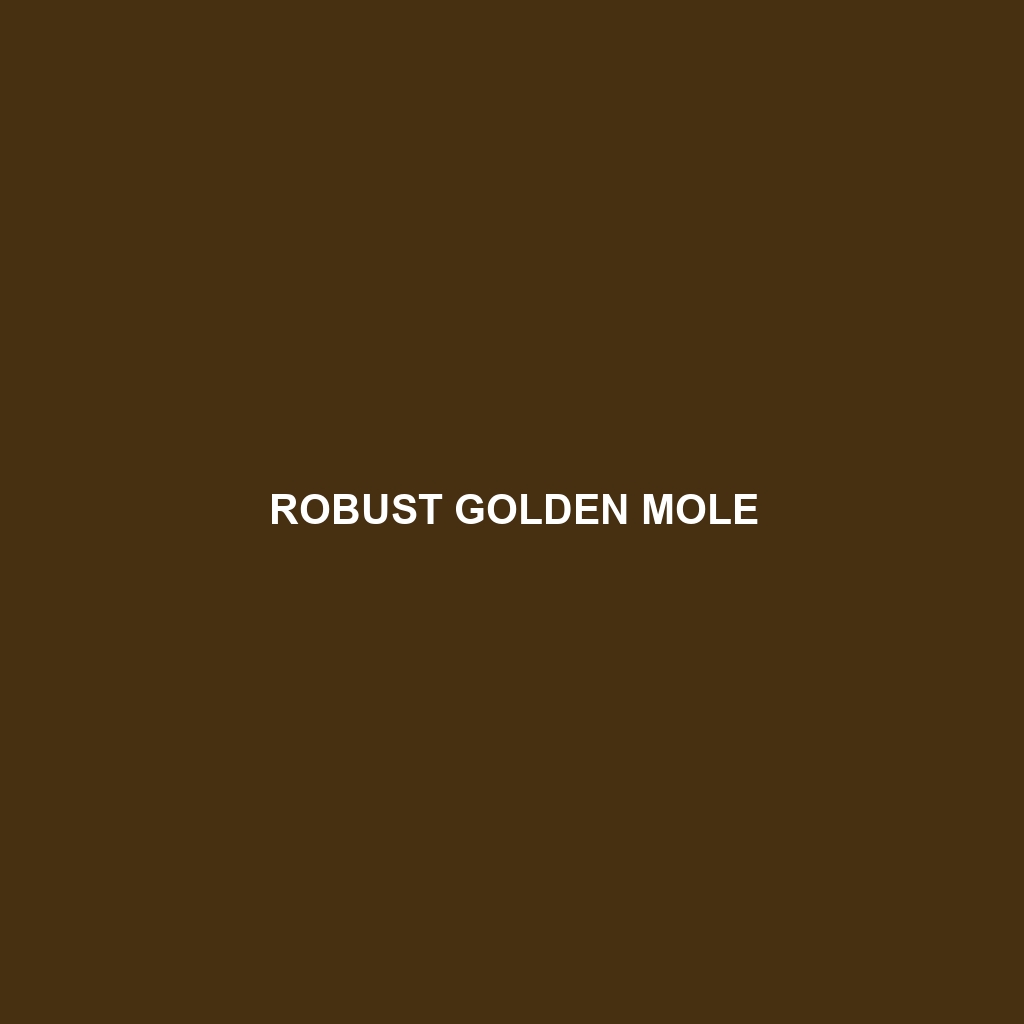Robust Golden Mole
The Robust Golden Mole (Amblysomus robustus) is a fascinating and elusive mammal native to the subterranean world of southern Africa. Despite its name, it is not closely related to true moles but is part of the Chrysochloridae family. This small, burrowing creature is remarkable for its glossy, iridescent fur and incredible adaptations to a life spent mostly underground.
Physical Characteristics
Size: The Robust Golden Mole typically measures between 12 and 16 centimeters in length, with a stocky and powerful build that aids in its burrowing lifestyle. They weigh approximately 60 to 120 grams.
Coloration: This species boasts a coat of dense, velvety fur that can appear golden, coppery, or even greenish under direct light due to its unique structure, which refracts light in multiple directions.
Special Features: The Robust Golden Mole lacks external eyes and ears, adaptations that suit their subterranean habitat. They possess strong, spade-like front claws designed for efficient digging. Their streamlined bodies allow them to move easily through soil.
Behaviors
Social Interactions: Robust Golden Moles are generally solitary creatures, coming together only during the breeding season. They communicate through vibrations and may produce faint vocalizations.
Feeding Habits: As insectivores, they primarily feed on earthworms, insects, and other small invertebrates. Their specialized teeth and strong jaws allow them to effectively capture and consume their prey.
Ecological Roles: By burrowing and aerating the soil, Robust Golden Moles play a crucial role in maintaining soil health. They help control insect populations and contribute to the decomposition process by breaking down organic matter.
Habitats
Range: Robust Golden Moles are found in the highveld and lowveld regions of South Africa, Swaziland, and parts of Mozambique.
Environment: They prefer sandy or loamy soils in grasslands, savannas, and forest edges where they can easily tunnel. They avoid overly compact or heavily clay-filled soils which are more difficult to dig through.
Adaptations
Sensory Adaptations: Lacking functional eyes, Robust Golden Moles rely on their acute senses of touch and hearing. They have sensitive whiskers and skin receptors that detect vibrations and pressure changes in the soil.
Burrowing Adaptations: Their powerful forelimbs, equipped with large claws, enable them to excavate extensive tunnel systems. Their fur is water-repellent, protecting them from damp soil.
Thermoregulation: They have a low metabolic rate and can enter a state of torpor to conserve energy during periods of food scarcity.
Conservation Status
The Robust Golden Mole is currently listed as “Least Concern” on the IUCN Red List, but like many specialized species, they face threats from habitat destruction, agricultural expansion, and urban development. Conservation efforts focus on protecting their natural habitats and mitigating impacts from human activities.
Fascinating Fun Facts
Iridescent Fur: The beautiful iridescence of their fur is caused by the microscopic structure of their hair, which refracts light similarly to the way peacock feathers do.
Efficient Digging: These moles can dig more than double their body length in just a few minutes, making them incredibly efficient burrowers.
Subterranean Navigation: Despite living underground, Robust Golden Moles can navigate complex tunnel systems with remarkable precision, using their sensory adaptations to avoid obstacles and find food.
In , the Robust Golden Mole is a remarkable example of evolutionary adaptation to a subterranean lifestyle. Its unique physical characteristics, solitary behaviors, and ecological contributions make it a vital component of its native ecosystems. As ongoing conservation efforts strive to protect its habitat, understanding and appreciating this remarkable creature becomes ever more crucial.
